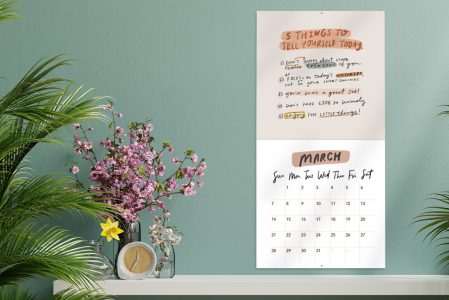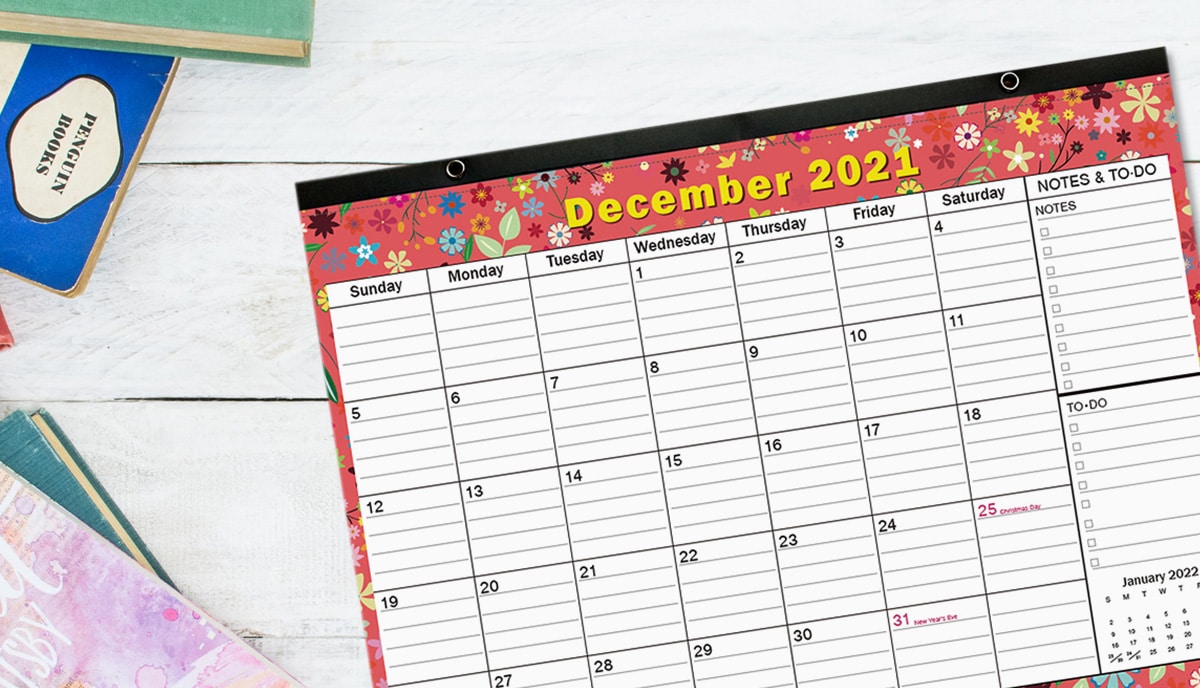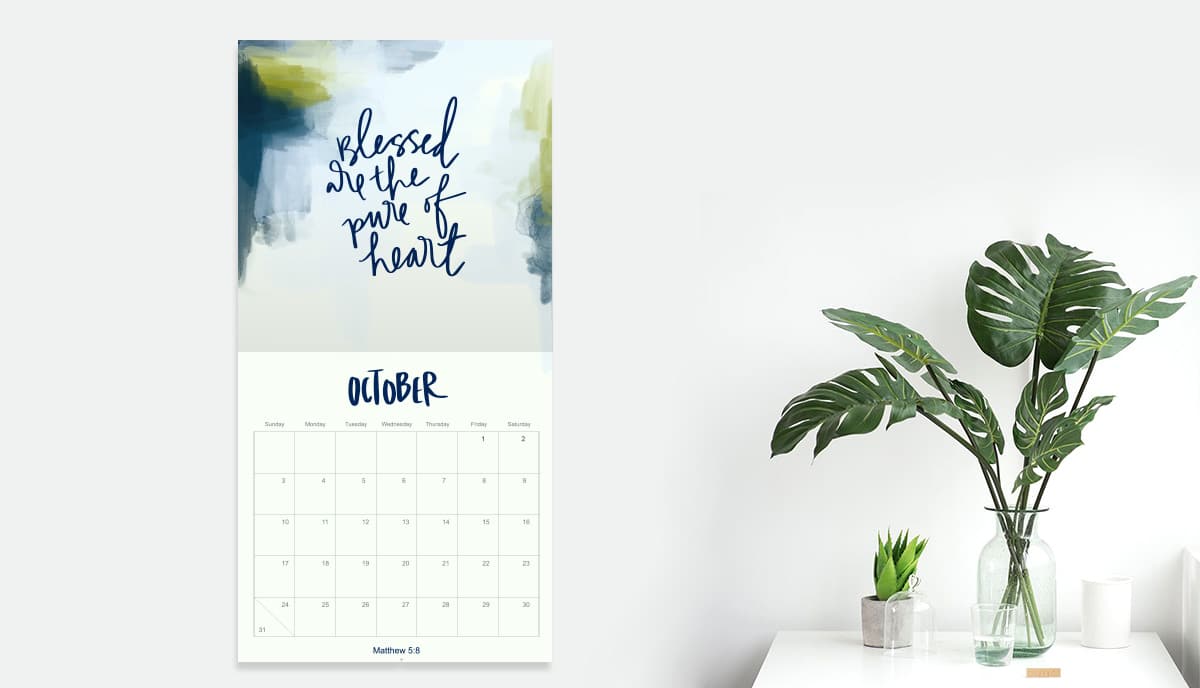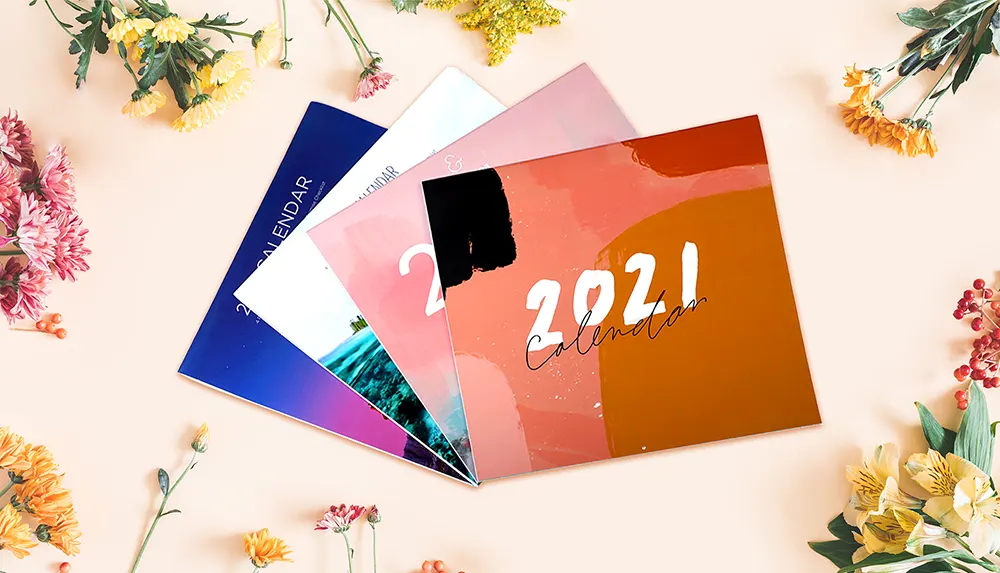We look at the factors that contribute to the cost of calendar printing and how we can save you money on printing your next custom calendar
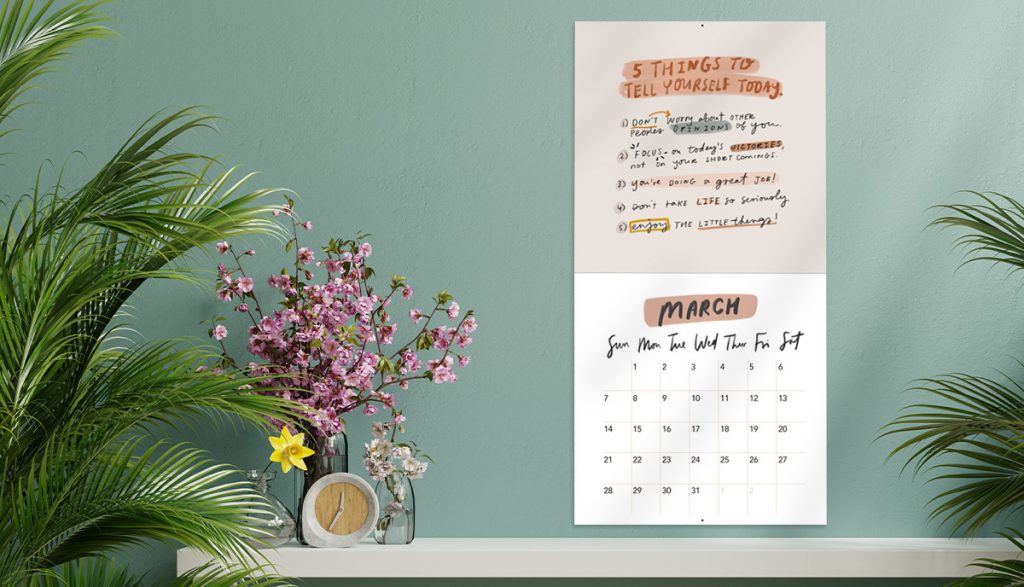
Most businesses print custom calendars to promote their brand visibility, keep customers engaged throughout the year, and capture new leads. Non-profits often print calendars for similar reasons. Independent creatives — artists, photographers, and authors — also take advantage of the marketing opportunities that custom calendars offer; and some people send them out to all their friends, family, and colleagues at Christmas, Thanksgiving, or on their wedding anniversary.
If you're interested in printing your own custom calendar, after creative considerations, price is likely to be a key factor which will influence your decision. At QinPrinting, we have over 25 years' experience successfully helping businesses, non-profits, independent artists and authors, and private individuals to print perfect custom calendars tailored to their unique needs. While several of our clients have few financial limitations, a limited budget constrains most. So, let's look at the factors which contribute to the cost of a printed calendar and share the ways you can keep those costs down without compromising the beauty and utility of your finished product.
How many calendars do you need?
The first question is about quantity. How many calendars do you need to print? There's a direct correlation between the number of calendars you print and the cost. We'll be honest with you, if you need fewer than 100 copies of your calendar, you may get a better deal with an online digital printer, even though you won't get the personalized customer service and professional quality reproduction that we guarantee to our customers. But if you want to print 100 or more calendars, we can help you save money.
Obviously, 500 calendars cost more than 100 calendars and 1,000 calendars cost more than 500 calendars in total. But, with offset printing, the more calendars you order from us at one time, the less you pay per unit. So, for example, 100 saddle-stitched, 11" by 8.5" calendars with the interior printed on 128 gsm / 86 lb matte art paper in full color, and a full-color glossy cover on 200 gsm / 74 lb laminated matte art paper would cost $282; while 500 would cost $397; and 5,000 would cost $1831.
Do the math. It means that 100 calendars will cost $2.82 each to print. That's already competitive. But keep going! Because printing 500 costs $0.79 each, and if you print 5,000, you get them for $0.37 apiece.
With a digital printer, the pricing stays the same per unit no matter how many copies you order. So, if you need 100 copies or more, offset printing your custom calendar with us could save you literally thousands of dollars. And while most offset printing companies have a minimum order quantity of at least 500 copies, at QinPrinting, we've set our minimum order at 100 to make these cost benefits as accessible to as many independent creatives, non-profits, and small businesses as possible.
Check out the at-a-glance charts below. You can also use our online calculator to get printing prices
| Quantity | 100pcs | 500pcs | 1000pcs | 2000pcs | 5000pcs | 10000pcs | ||||||
|---|---|---|---|---|---|---|---|---|---|---|---|---|
| Size | Unit | Total | Unit | Total | Unit | Total | Unit | Total | Unit | Total | Unit | Total |
| 11" x 8.5" | $2.82 | $282 | $0.79 | $397 | $0.54 | $537 | $0.42 | $833 | $0.37 | $1,831 | $0.33 | $3,349 |
| 12" x 12" | $4.30 | $430 | $1.26 | $630 | $0.85 | $851 | $0.67 | $1,348 | $0.59 | $2,970 | $0.56 | $5,551 |
- Please note that all prices are EXW our facility and do not include shipping costs.
- Cover: 200 gsm / 74 lb coated cover paper with matte lamination
- Interior: 128 gsm / 86 lb coated text paper
- 24pp+4pp
- Cover and inner: full color printing
- Plastic bag for each one
- 1-hole drilled
Choosing paper for your printed calendar
The choice of paper and card stock you make for your calendar's pages and cover sheets also affects the final price. The possibilities are vast and include coated gloss, matte, and silk art paper, uncoated offset paper, various card stocks, textured paper, and more. Like most printers, we have our standard papers and keep a bulk supply of the stock solutions which have proved most popular.
So, if you choose a standard paper solution for your calendar — say, 128 gsm / 80 lb matte coated art paper — and avoid fancy touches such as UV spot coating, lamination, and embossing, you can keep your costs low while still getting a product which looks and feels great and does what it needs to do. But the best approach for choosing the right paper for your calendar and your budget is to get in touch and talk things through with one of our friendly, expert team. That way, we can work together to tailor the perfect solution to your needs.
Finishes, lamination, and extras
To keep your calendar printing costs down, make your finishes standard. For example, choose uncoated text paper for the main pages and a matte or gloss coated paper for the cover with no special finishes. If you want a laminated surface, use a basic matte or gloss laminate rather than a more specialized — and expensive — one such as soft touch lamination. Of course, we can handle spot UV coating, embossing and debossing, die-cutting, foil stamping and more if you like, but if you're on a tight budget, consider these as extras to include only if you have any wriggle room once you've fixed your fundamental design parameters.
Your calendar's size and shape
Most calendars we print are in the following sizes:
- 8.5" by 5.5" / 8.5" by 11" / 12" by 12" for wall calendars
- 8.5" x 11" / 27" x 39", and 11" x 17" for large poster calendars
- and as small as 5" x 7" or even 2" x 3.5" for pocket-sized card calendars
We're happy to make custom-sized calendars and we often do. But remember, the more custom features you request, the costlier your calendars will get. The same applies to shape. Our standard formats are simple portrait or landscape styles. Again, you can customize but it'll add to the cost. To keep costs down, stick to a standard portrait or landscape layout. While innovating can be an excellent strategy, it can also backfire if the resulting product falls too far outside your customer's expectations. Often, using a familiar strategy isn't only less expensive, but more effective, too!
The number of pages in your calendar
The more pages your calendar contains, the more paper and ink it involves and the more it will cost to print. But it may surprise you it's not only the number of pages which can add to the cost of your custom printed calendar, but also the ratio. Because of the way we make calendars, it will be less expensive to print if your page number is divisible by 4. So, for example, our most cost-effective calendars typically have 28, 32, or 40 pages. Whereas an odd number — say 13, 21, or 35 pages — would actually cost more.
Choosing a binding style for your calendar
You have three standard binding styles from which to choose for your printed calendar. Each has a specific functionality and price point. Let's look at them now.
Saddle stitch binding
When we saddle stitch a calendar, we collate the sheets, fold them, stack them one inside the other and then staple or stitch the whole together. This is an inexpensive binding option and good for calendars which needn't be hung up on open display but are kept in a briefcase, on a desk top for easy reference, or otherwise treated similarly to a diary. However, with the addition of a hole punched into the middle of the cover and pages, they can also be hung.
Wire-O binding
This is the binding most people imagine when they think of a wall calendar. We punch or drill holes — depending on the thickness of the paper and the number of sheets — through one edge of each sheet and bind them together with a double-coiled wire. We can also include a small wire looped insert for hanging the calendar, or we can punch a hanging hole, as with the saddle stitched calendar.
Spiral binding
Spiral binding is like wire-o binding but uses a single, robust but flexible plastic coil. The coils come in a wide range of sizes and colors from which to choose. This binding allows you to turn the sheets easily, even through 360°. If we add a more rigid backing, you can stand the calendar up as a desk calendar, too. This is a robust, attractive, and inexpensive binding solution.
How much does it cost to print a calendar?
As you'll appreciate by now, there's no one-size-fits-all answer to this question. But you should see that the range of options for custom printing a promotional calendar is vast. This means that you have plenty of options with which to play and you will find a configuration to suit; one which is personalized to your needs as a business, non-profit, independent creative, or private individual; a calendar printing solution that looks good, works well, and costs little.
Talk to us!
If you have an idea in mind for a printed calendar, get in touch. We'll be delighted to talk you through the options and help you find a solution tailored to your aims and budget. As we said, we have over 25 years' success in the industry to boast, a worldwide reputation for excellence, and a genuine commitment to caring for our customers. We can't wait to work with you!





